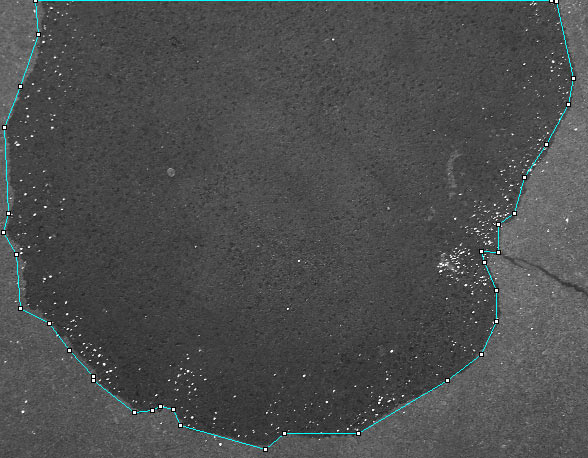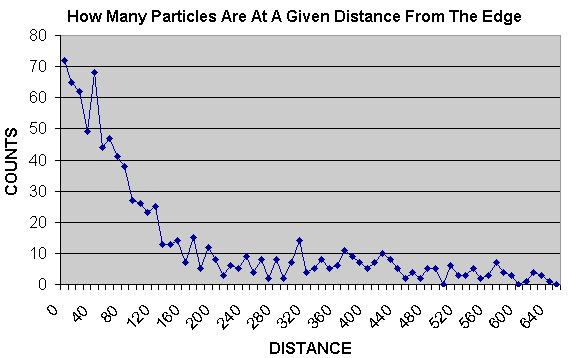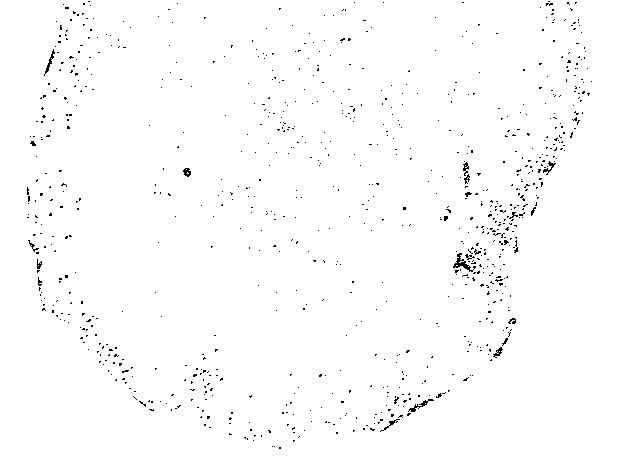Variation/combination of ship-to-shore
method used for gold counting in electron micrographs of spread mammalian
cells and of annulus macros used to measure
intensity variation at equal distances from a perimeter. The benefit over
the older methods is that this method is fast and simple even where the
particles cannot be segmented by thresholding and must be chosen by manual
clicking. Instructions for use in comments at top of macros: puddle-edge-v102.txt
In this example, powdered ice was plated on gridded concrete using natural pre-vernal cryo precipitation
methods. Calcium chloride crystals were applied to the ventral surface and incubated
for two weeks at environmentally normal temperatures with periodic 5 to 6 hours per day
exposure to electromagnetic radiation ranging from the low UV up through high IR
as well as fluctuation of approximately 20 degrees C in the ambient atmosphere
at sea level. The repeated thaw and freeze cycles resulted in the
formation of discrete pools referred to in the vernacular as
"puddles". We sought to quantify the calcium chloride aggregates
as a function of distance from the (retracting) perimeter of the puddles.

Lamella of the organism. |

Green channel extracted as bw image for use in automated analysis.
Traced by the human operator. |

Results of software calculating minimum distance from each chloride
precipitate to the retracting edge.
Results from multiple pools may be pooled. |

Admittedly the quick thresholding in this example was not particularly
robust at selecting only pure particles of interest (but the clumping near
the perimeter is really groups of individual particles squished together
when the image was shrunk to fit on this web page; they were discrete in
the original data measured). This would be cleaned up in real world
applications. |



